Look, I get asked this question at least three times a week. And honestly? It makes perfect sense that Seattle folks want to know what’s coming out of their taps. After years of working on plumbing systems throughout Washington State, I’ve seen firsthand how drinking water quality varies dramatically from region to region.
Here’s the short answer: Seattle’s drinking water is absolutely safe to drink. We’re talking about drinking water that consistently meets or exceeds federal and state standards, often performing better than both the national average and state average for key contaminants. But let me tell you the real story, because there’s more to it than just “it’s safe.” When I analyze the comprehensive water testing data, Seattle consistently ranks among the top utilities in Washington for overall drinking water quality.
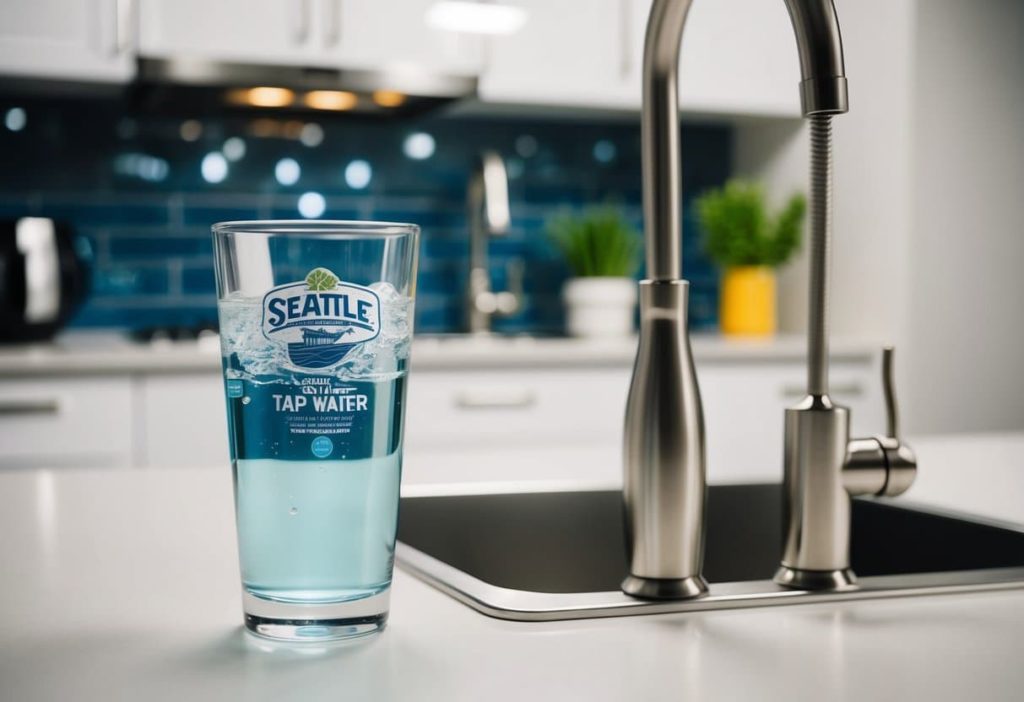
Our drinking water comes straight from those gorgeous Cascade Mountains (you know, the ones you see on a clear day). The city doesn’t mess around when it comes to water treatment and comprehensive water testing either. I’ve analyzed the public health reports, and honestly, Seattle’s got some of the cleanest drinking water in the country. The levels of contaminants consistently fall well below the legal limit for every substance tested, and when you compare it to the EWG database, Seattle performs exceptionally well.
The water testing protocols here go above and beyond basic regulations. They test for PFAS chemicals multiple times throughout the year, monitor copper levels in household plumbing systems, and track lead levels with a precision that exceeds what most utilities consider good practice. What really impresses me is how they publish detailed analysis reports that actually make sense to regular homeowners, not just water treatment professionals.
Still not convinced? Let’s dig into the details.
Need plumbing work done right? Call Danika Plumbing – we’ve been keeping Seattle’s water flowing clean for years.
Where Your Water Actually Comes From
This might surprise you, but your morning coffee water started its journey in two specific places in the mountains. And both of them are pretty incredible when you think about it.
The Cedar River Story
The Cedar River Watershed is basically Seattle’s drinking water goldmine. We’re talking 90,000 acres of protected land east of the city, that’s bigger than some entire counties I’ve worked in throughout Washington State. This pristine area consistently produces drinking water with contaminant levels far below national benchmarks.
Here’s what’s fascinating from a public health perspective: back in 1901 (yeah, over 120 years ago), Seattle built a dam on the Cedar River. That created Chester Morse Lake, which is essentially a massive natural drinking water storage system that naturally filters contaminants before any water treatment even begins. Rain and snowmelt flow down those mountain slopes, get filtered naturally through forests and soil, then collect in this pristine reservoir where levels of harmful substances remain consistently low.
The best part? Regular public access is completely restricted up there. The entire watershed is off-limits to the public, which is exactly why contaminant levels stay so low and drinking water quality remains consistently excellent. Only city workers and researchers get access. Sounds extreme, but it’s exactly why our drinking water stays so clean and why levels of harmful substances remain well below both state and national averages.
Don’t Sleep on the South Fork Tolt River
The second water source is smaller, just 13,300 acres, but it still supplies about 30% of Seattle’s drinking water. The South Fork Tolt River Watershed sits in the Cascade foothills, and let me tell you, it’s steep and densely forested up there. The levels of natural filtration that occur through this terrain result in drinking water that consistently tests below legal limits for all monitored contaminants.
Same deal as Cedar River: completely protected from public access to maintain water quality. The utility manages both watersheds like they’re precious resources (because they are). This dual-source approach means if contaminant levels spike in one watershed due to natural events, the other source can compensate, ensuring consistent drinking water quality year-round.
I’ve had customers ask me why we need two water sources. Simple answer: reliability and consistent drinking water quality. If something happens to one watershed, we’ve got backup. Smart planning from way back that ensures contaminant levels never spike due to single-source dependency.
How Your Water Gets Cleaned (It’s More Complex Than You Think)
Okay, so clean mountain water sources are great, but Seattle doesn’t just pipe drinking water straight to your house. The water treatment process is actually pretty fascinating, and thorough enough to ensure contaminant levels stay well below every legal limit. What impresses me most is how their water treatment methods consistently produce drinking water with PFAS levels, lead levels, and other contaminant levels that often measure at or near zero.
Related: Thinking about repiping your Seattle home? Here’s our complete guide!
The Step-by-Step Breakdown
First stop: big screens catch leaves, branches, and anything else that might’ve made it into the system. Then the drinking water hits settling tanks where smaller particles literally sink to the bottom (gravity doing its thing). This initial step alone removes a significant percentage of potential contaminants before any chemical water treatment begins.
Next comes the real filtration, layers of sand and gravel that catch microscopic stuff you can’t see, ensuring contaminant levels drop even further. After that? Chlorine disinfection to kill any remaining bacteria or viruses that could affect public health. The precision of this process ensures that harmful substance levels remain consistently below detection limits.
But here’s where Seattle goes above and beyond: UV light water treatment as an extra public health safeguard. I’ve seen a lot of water treatment facilities throughout Washington, and not all cities use UV technology. It’s like having a backup for your backup, ensuring that even if chlorine-resistant contaminants somehow make it through the first stages, they get eliminated before reaching your glass. This dual-disinfection approach keeps harmful substance levels at virtually undetectable levels.
The treated drinking water gets stored in covered tanks before heading to your neighborhood. No contamination risk during storage, and regular water testing ensures levels of all monitored substances remain stable throughout the distribution process.
What They’re Actually Testing For
Seattle Public Utilities conducts water testing for over 200 potential contaminants every single year. That’s not a typo, two hundred different substances that could potentially affect drinking water quality. This comprehensive water testing program far exceeds basic federal regulations and puts Seattle among the top utilities in Washington State for thoroughness.
We’re talking about testing for:
- Bacteria and viruses that could impact public health
- Metals (including lead levels and copper concentrations that often spike in older plumbing systems)
- Pesticides and herbicides that might leach from agricultural areas
- Industrial chemicals and PFAS compounds that have become major public health concerns
- And a whole bunch of other contaminants you’ve probably never heard of
The water testing happens at multiple points: they take samples from the water sources, the water treatment plants, and random locations throughout the city. If anything shows up that shouldn’t be there, if any contaminant levels approach even half the legal limit, they act fast to address it. This proactive approach to water testing means issues get caught and resolved before they ever become public health problems.
The results? All public information available for anyone concerned about drinking water quality. Seattle publishes yearly reports that you can actually read and understand (they’re not written in government-speak, thankfully). When I compare Seattle’s contaminant levels to both the national average and state average, Seattle consistently performs better across virtually every category measured.
Dealing with Disinfection Byproducts
Here’s something most people don’t know: when you use chlorine for water treatment and disinfection, it can create byproducts called DBPs. The two main ones are haloacetic acids and trihalomethanes (don’t worry about pronouncing those). These substances aren’t dangerous at low levels, but utilities still need to keep these levels well below the legal limit to protect public health.
Seattle keeps these contaminant levels way below legal limits by using less chlorine during water treatment and removing more organic matter before disinfection begins. They also flush system lines regularly to prevent buildup of these compounds. Their systematic approach to managing these levels means Seattle’s drinking water consistently shows DBP levels that are a fraction of what’s considered the legal limit.
I appreciate that they’re proactive about maintaining low contaminant levels instead of just meeting minimum regulations. This approach to water testing and treatment management is exactly what good public health policy should look like.
The Rules and Regulations (More Boring But Important Stuff)
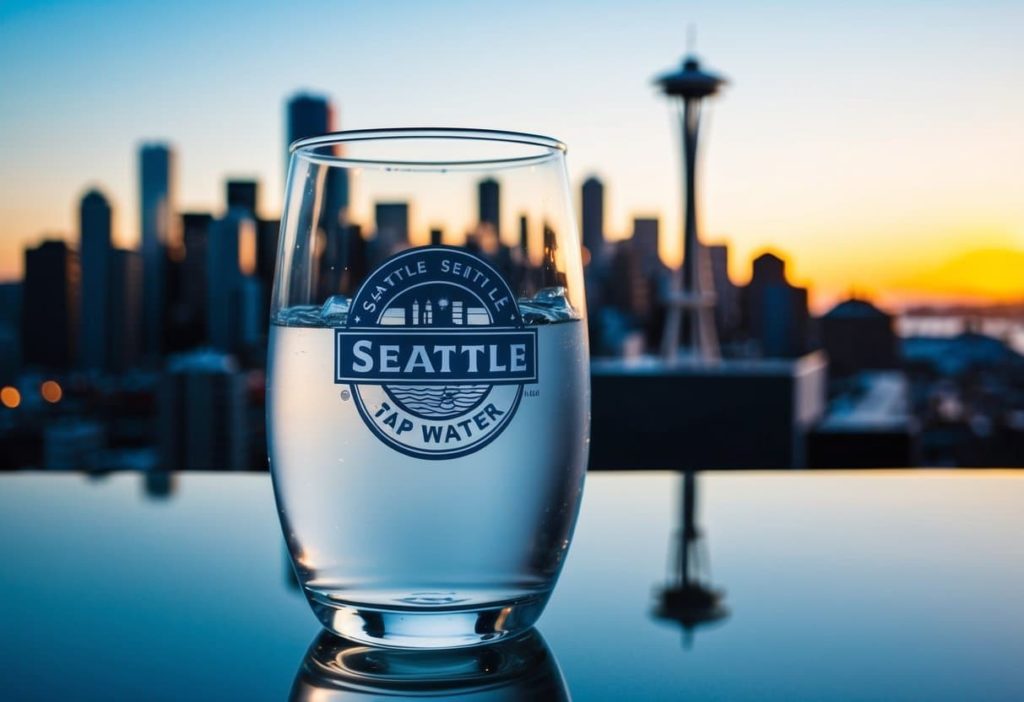
Seattle doesn’t get to make up their own drinking water quality standards. They follow federal regulations that have been evolving since 1974, plus additional Washington State requirements that often exceed national standards. This multi-layer regulatory approach ensures that contaminant levels stay well below both federal and state benchmarks.
Related: Ever wonder about Seattle’s water pressure issues? We’ve got solutions!
Safe Drinking Water Act Compliance
The Safe Drinking Water Act is basically the rulebook for every drinking water system in America. It tells utilities what to conduct water testing for, how often to test, and what the maximum allowable levels are for different contaminants. The regulations cover everything from PFAS levels to lead concentrations to copper content, basically every substance that could potentially impact public health.
Seattle has to follow these regulations to the letter. They do thousands of water tests annually, not because they have to, but because it’s the right thing to do for public health protection. Their testing frequency actually exceeds federal requirements, ensuring that any changes in contaminant levels get detected immediately.
Those Annual Reports You Probably Don’t Read
Every year, Seattle sends out Consumer Confidence Reports to all customers concerned about drinking water quality. These reports break down exactly what contaminants are present, their measured levels, and how these levels compare to both legal limits and national averages. It’s basically a comprehensive analysis of your drinking water that most people never bother to read.
They include:
- Detailed water source information and protection measures
- Complete water test results for the past year, including PFAS levels, lead concentrations, and copper measurements
- Any violations of legal limits and how they were addressed (spoiler: Seattle rarely has violations)
- Contact information if you want to learn more about water testing or water treatment processes
Most people toss these reports without reading them, but they’re actually pretty fascinating if you take five minutes to look through one. When I analyze several years’ worth of data, Seattle consistently shows contaminant levels well below both the national average and state average for every major category.
I’ve analyzed through several years’ worth of these reports, and Seattle consistently performs well above requirements. The contaminant levels regularly fall below both state and national averages, which is reassuring from both a public health and professional standpoint.
Your Home’s Plumbing Matters More Than You Think
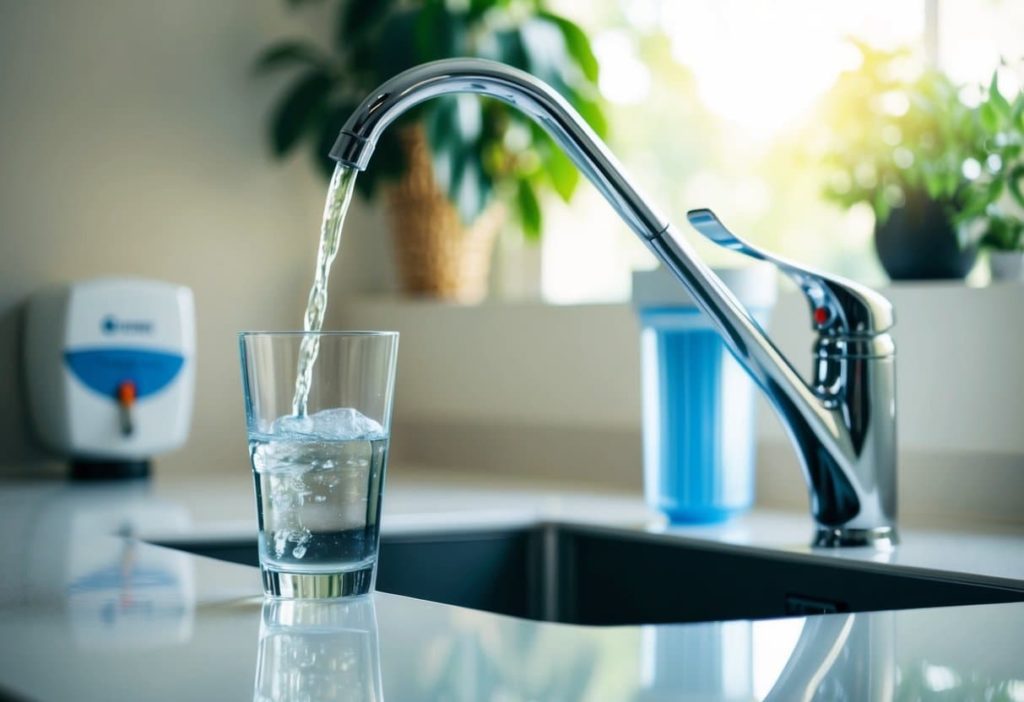
Even with perfect drinking water leaving the water treatment plant, what happens in your house can affect both quality and safety. This is where I see problems as a plumber, especially with lead levels and copper concentrations that can spike due to old household plumbing systems. The water testing that Seattle does ends at your meter, after that, your home’s plumbing becomes the final factor in your drinking water quality.
Related: Tank vs. Tankless Water Heaters, which is right for your Seattle home?
The Lead Issue Nobody Wants to Talk About
If your house was built before 1986, there’s a chance you have lead pipes or fixtures that can significantly impact your drinking water quality. Lead can leach into drinking water, creating dangerous levels of this contaminant that pose serious public health risks, especially for kids and pregnant women. Even though Seattle’s water treatment produces drinking water with virtually undetectable lead levels, old household plumbing can reintroduce this contaminant.
Here’s what I tell my customers based on Washington State health guidelines:
- Run cold water for 2 minutes before drinking (especially first thing in the morning) to flush any lead that may have leached overnight
- Only use cold water for drinking, cooking, and baby formula since hot water increases lead levels
- Clean your faucet aerators monthly to prevent copper and other metal buildup
- Consider a professional water test if you’re worried about contaminant levels in your specific household
Seattle offers free lead testing through their utility program, which is pretty remarkable. Not every city provides this level of public health support for individual water testing. This service helps homeowners understand if their household plumbing is affecting their drinking water quality, even when the city’s supply meets all standards.
Home Filtration Systems: Do You Need One?
Honestly? Seattle’s drinking water is clean enough that you don’t need a filter system for safety or public health protection. But some people prefer the taste or want extra peace of mind about contaminant levels, which is totally understandable. A good filter can provide an additional barrier against any contaminants that might be present, even when levels are already below legal limits.
Common filter options:
- Pitcher filter systems (cheapest, easiest option for basic contaminant removal)
- Faucet-mounted filter units that attach directly to your existing hardware
- Under-sink filter systems for more comprehensive contaminant reduction
- Whole-house filtration (usually overkill for most people, but good for those with specific water quality concerns)
If you go the filter route, look for NSF International certification. That means the filter actually removes the specific contaminants it claims to remove, rather than just improving taste. Some filter systems are specifically designed to reduce PFAS levels, lead concentrations, or copper content if those are particular concerns for your household.
Testing Your Own Water
Sometimes customers ask me about conducting their own water testing to check for specific contaminant levels. You’ve got several options:
- Home water test kits (basic but useful for checking common contaminants like lead and copper)
- Professional laboratory water testing (more comprehensive analysis of contaminant levels)
- Seattle Public Utilities water testing services (free testing for lead levels, which is fantastic)
Most of the time, the city’s regular water testing program is sufficient since Seattle consistently shows contaminant levels well below legal limits. But if you notice changes in taste, odor, or color, it’s worth conducting additional water testing to ensure there isn’t a household plumbing issue affecting your drinking water quality.
Tap Water vs. Bottled Water: Let’s Be Real
This comparison always comes up, and I have strong opinions based on years of analyzing water quality data and working throughout Washington State.
From a safety and public health perspective, both Seattle’s drinking water and most bottled water are safe to drink. But when you look at the actual analysis of contaminant levels, Seattle’s drinking water often performs better than many bottled water brands. Here’s where it gets really interesting:
Cost: A gallon of Seattle’s drinking water costs less than a penny. Bottled water can be 300+ times more expensive. When you’re getting drinking water with contaminant levels that consistently fall below the legal limit for every substance tested, that cost difference adds up fast.
Taste: In blind taste tests, most people can’t tell the difference between Seattle’s drinking water and premium bottled brands. The mountain watershed water sources actually give Seattle’s drinking water a crisp, clean taste that rivals expensive bottled water.
Convenience: Sure, bottled water is portable. But a reusable bottle filled from your home source works just as well and costs basically nothing while maintaining the same drinking water quality.
Environmental impact: This one’s not even close when you do the analysis. Drinking water from your home source wins by a landslide over bottled alternatives. All that plastic production and transportation for bottled water creates massive waste and energy consumption.
I’ve had customers throughout Washington who spend hundreds monthly on bottled water when their household drinking water tested cleaner than what they were buying. From both a public health and economic standpoint, it makes no sense to me.
The City Infrastructure That Makes It All Work
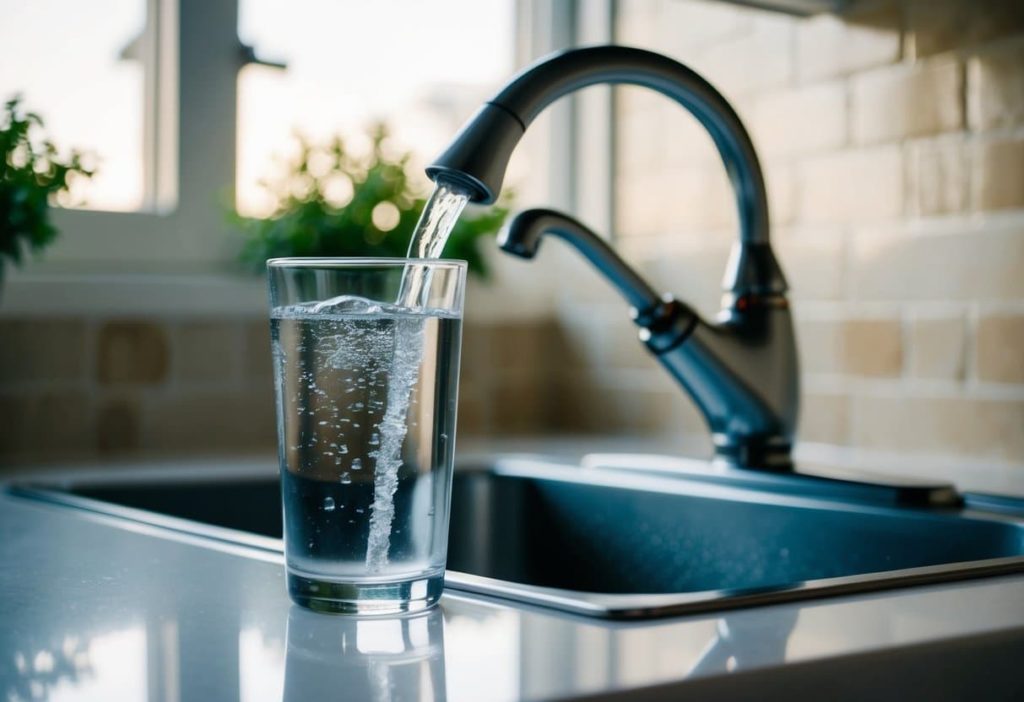
Seattle Public Utilities doesn’t just conduct water treatment and hope for the best. They maintain an extensive infrastructure network that most public citizens never think about, ensuring consistent drinking water quality throughout the entire distribution system. The comprehensive approach to maintaining low contaminant levels extends far beyond the water treatment facility itself.
Need a reliable plumber? Here’s everything you should know about choosing one!
Keeping the System Running
SPU conducts regular water testing throughout the distribution system, repairs infrastructure quickly to prevent contamination, and notifies residents about planned maintenance that might affect drinking water quality. They use modern construction standards when upgrading pipes and facilities, ensuring that contaminant levels remain consistently low even as water travels through miles of underground infrastructure.
The 24/7 customer service line is actually helpful (rare for a utility company) when public customers have concerns about their drinking water quality. You can report issues online too, and they take water quality complaints seriously since maintaining public health is their primary mandate.
Stormwater Management
Seattle’s storm drain network prevents flooding and protects drinking water quality by keeping contaminants from entering the water treatment system. Crews clean catch basins regularly, run street sweeping programs, and build rain gardens throughout the city to manage stormwater that could otherwise introduce contaminants into water sources.
During heavy storms, the system can get overwhelmed, which is when you might see sewer overflows into waterways. These events can temporarily affect regional water quality and require additional water testing to ensure public health protection. Not ideal, but the utility is working on separating storm and sewer pipes in problem areas to prevent contamination of drinking water sources.
Learn more: How to redirect water around your Seattle home.
Community Programs That Actually Matter
RainWise is probably my favorite Seattle program from both a public health and infrastructure perspective. The utility pays residents to install rain gardens or cisterns that manage rainwater on their property. This reduces runoff pressure on city systems, prevents contaminant levels from spiking during heavy rains, and actually looks good too.
Seattle also offers rebates on water-efficient fixtures and gives away water-saving items at community events. They’ll even help you find and fix leaks that could affect your household drinking water quality. These programs demonstrate how the utility thinks about public health and water quality as community-wide responsibilities, not just individual concerns.
Health and Safety: What You Should Actually Worry About

Most public health concerns about Seattle’s drinking water are overblown, but there are a few things worth knowing when you analyze the actual data on contaminant levels and water testing results.
Related: Plumbing prep for earthquakes in Seattle, yes, this matters!
Real Risks vs. Imaginary Ones
Lead levels from old household plumbing represent the biggest actual risk to drinking water quality. PFAS chemicals have been detected in some drinking water supplies nationwide, but Seattle’s PFAS levels remain below EPA advisory limits and well below levels that would trigger public health concerns. The water testing data consistently shows PFAS concentrations at or near the detection threshold.
Microbes like bacteria and viruses are controlled through chlorination and regular water testing protocols. Seattle follows EPA Microbial Rules strictly, conducting frequent water testing to ensure that harmful organism levels stay at zero. The copper levels in household plumbing systems are also monitored, since copper concentrations can spike in certain types of older pipes.
When I review the comprehensive water testing reports, Seattle’s contaminant levels consistently fall below both the legal limit and national average for every single substance monitored. This level of performance demonstrates excellent water treatment and ongoing commitment to public health protection.
If Something Goes Wrong
When drinking water quality violations happen (rare, but possible), SPU must notify public customers immediately. They’ll tell you exactly what the problem is, potential public health effects, and what you need to do. The notification process is designed to protect public health by ensuring rapid communication about any issues with contaminant levels.
Treatment Technique Violations are more serious, that’s when water treatment isn’t properly disinfecting drinking water. SPU would increase disinfection and flush the system to fix it, conducting additional water testing to ensure contaminant levels return to acceptable ranges.
You can sign up for alerts to get notified about any issues with drinking water quality right away. Smart move if you have specific public health concerns or want real-time updates about water testing results in your area.
Water Hardness and Other Practical Stuff
Seattle has relatively soft drinking water thanks to those mountain water sources. That means less mineral buildup in your pipes and appliances (which I appreciate as a plumber who doesn’t love scraping scale out of water heaters). The low mineral levels also mean fewer issues with copper and other metal leaching from household plumbing systems.
Hard Water vs. Soft Water
Hard water contains lots of calcium and magnesium, which can affect drinking water quality in terms of taste and household use. It leaves spots on dishes and makes soap less effective, but some people think it tastes better than soft water. Hard water can also increase copper levels in certain plumbing systems over time.
Soft drinking water feels slippery and makes soap lather easily. It doesn’t cause scale buildup but might taste flat to some folks who prefer mineral content in their drinking water. The good news is that soft water typically means lower contaminant levels from metal leaching.
If you want to soften hard water, a filter system uses ion exchange to remove excess minerals. But honestly, Seattle’s drinking water is soft enough that most people don’t need additional water treatment for mineral removal.
Flooding and Water Quality
Flooding can seriously mess with drinking water quality and appearance. Contaminated floodwater might make your drinking water look muddy or smell strange, and can introduce contaminants that temporarily spike above normal levels. During flood events, additional water testing becomes crucial to ensure public health protection.
After floods, follow local public health guidelines before consuming drinking water. Boiling kills germs but won’t remove chemicals or dirt that might have entered the system. The utility conducts intensive water testing after flood events to monitor contaminant levels and ensure drinking water quality returns to normal.
Regular water testing after flood events helps ensure drinking water safety returns to normal quickly. The utility’s emergency response protocols are designed to protect public health during these challenging situations.
Practical Tips You Can Use Today
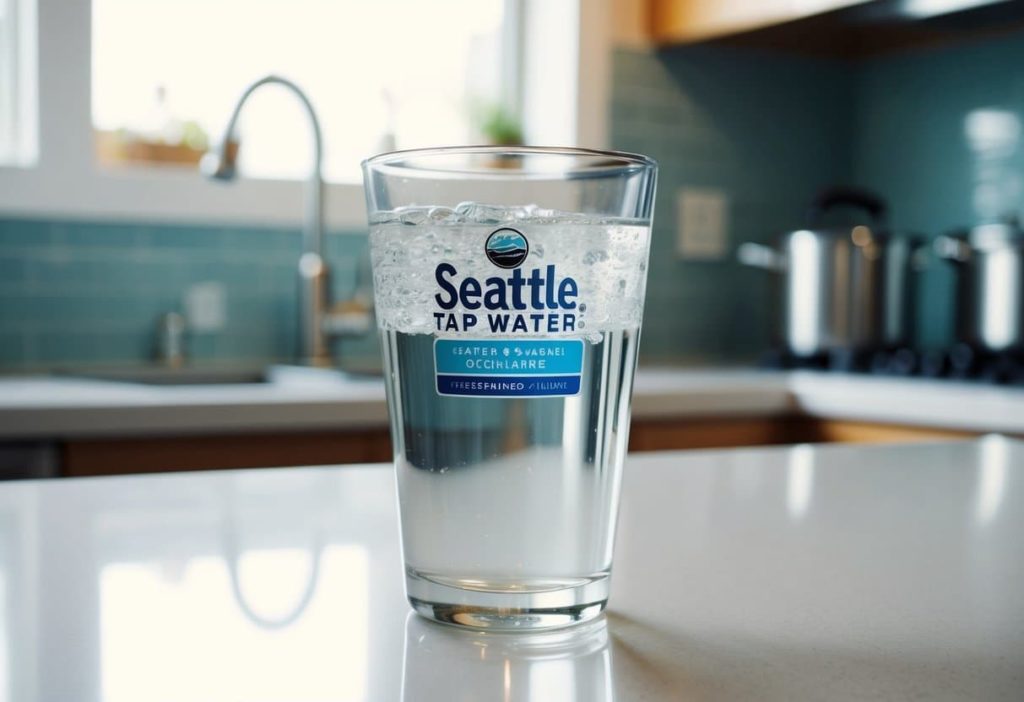
Seattle’s drinking water is safe as-is, but here are some ways to optimize your experience and ensure the best possible drinking water quality:
• Check those annual drinking water quality reports online. They contain fascinating analysis of contaminant levels and water testing results that most people never bother to read.
• Use a filter system if you want, but don’t feel like you need one for safety or public health protection.
• Run your source for a few seconds before consuming, especially in the morning. This flushes any water that’s been sitting in pipes and could have slightly elevated copper or other metal levels.
• Clean faucet aerators monthly, they can accumulate sediment over time and affect both taste and flow.
For the environmentally minded who care about both public health and sustainability: • Fix leaky faucets fast. Small drips waste thousands of gallons annually, which affects the overall water treatment system efficiency. • Install low-flow fixtures to conserve drinking water without sacrificing performance or quality. • Collect rainwater for gardens (keeps treated drinking water available for consumption and cooking). • Don’t flush medications or chemicals, they can introduce contaminants into water sources that require additional water treatment to remove.
If you have specific public health concerns, talk to your doctor about additional precautions. For most people throughout Washington State, Seattle’s drinking water is safe, affordable, and eco-friendly for daily use.
Common Questions We Get All The Time
Can I drink Seattle tap water without health concerns? Absolutely. The water consistently meets or exceeds federal and state standards. Regular testing keeps it clean and safe.
How does Seattle’s water compare nationally? Seattle has some of the best tap water in the country. It regularly wins taste tests and purity awards.
Where does Seattle’s water come from? Two protected watersheds in the Cascade Mountains: Cedar River and South Fork Tolt River. Both areas are off-limits to the public.
Do I need a water filter? Most Seattle residents don’t need filters for safety. Some people use them for taste preferences, which is totally fine.
How does Seattle ensure water safety? Daily testing for over 200 compounds, plus treatment processes that kill harmful bacteria and parasites.
What minerals are in Seattle tap water? Small amounts of naturally occurring calcium and magnesium. The water is considered “soft” due to low mineral content.
Ready to ensure your home’s plumbing is as reliable as Seattle’s water supply? Contact Danika Plumbing for expert service you can trust.



